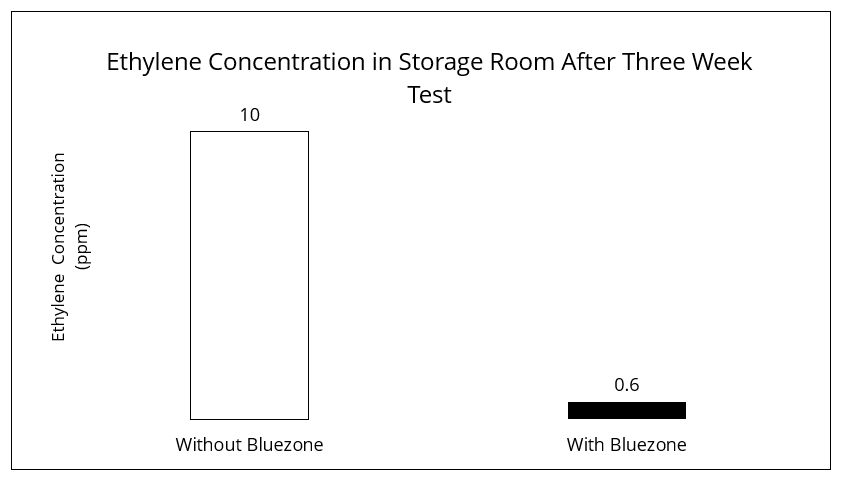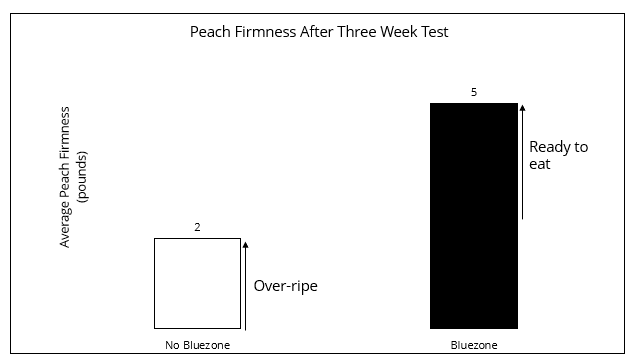Peaches Study
Full-Scale, Mixed Load Container Testing with Air Cleaned by Bluezone® Model 2400
Summary
In three week test, Bluezone maintained peach quality and prevented peaches from over-ripening.
Objective
To quantify the effectiveness of the Bluezone Model 2400 in maintaining quality and extending the shelf life of FF&V stored or shipped in mixed loads.
Methods and Materials
We conducted a side-by-side test of a mixed produce load over a 3-week storage period, to measure produce quality and the shelf life extension achieved with Bluezone Fresh Preservation Technology.
Configuration
- Two, 8’X8’X20’ Refrigerated Containers, each set to 34°F with ventilation sufficient to maintain CO2 below 1%.
- Mixed produce load of ethylene sensitive and ethylene producing FF&V.
- Temperature, humidity, carbon dioxide and ethylene measurements taken at regular intervals.
- One container with Bluezone, second container without Bluezone.
Duration
- 21 Days of Refrigerated Storage
- 5-10 Additional days of ambient temp storage for specified FF&V
Results
The Bluezone Model 2400 maintained ethylene concentration in the mixed load container at 0.6ppm throughout the 21-day test. Uncontrolled ethylene concentration was 10ppm.
This dramatic reduction in ethylene concentration had a significant impact on the quality of ethylene sensitive produce, such as peaches.

Test Results for Peaches
Storing peaches in a mixed load environment with Bluezone operating to clean the air of ethylene significantly decreased the softening of peaches over a 21 day storage period.
- At the end of 21 days of testing, the peaches stored with Bluezone operating were softer than at the start of the test, as expected, but not yet ready to eat.
- At the end of the 21 days of testing, the peaches stored without Bluezone operating were over ripe.

Conclusion
Use of Bluezone Fresh Preservation Technology in mixed produce storage significantly reduced the ripening of peaches, making the difference between peaches that could be sold at retail versus ones that were too ripe to eat.
